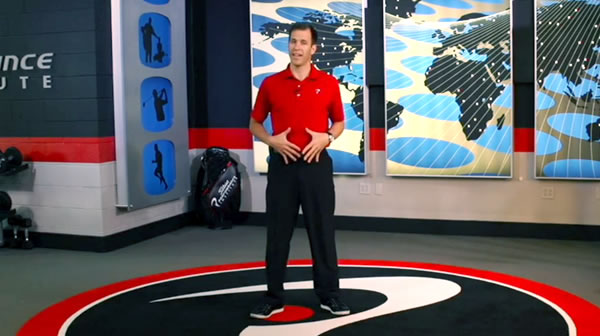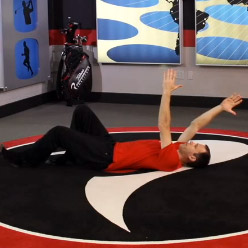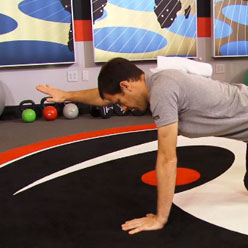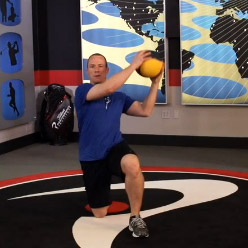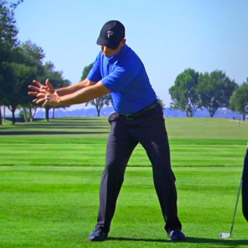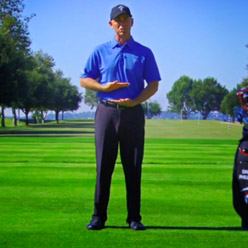Reverse Spine Angle
A Reverse Spine Angle is defined as any excessive upper body backward bend (trunk leaning towards the target) or excessive left lateral upper body bend (for a right-handed player) during the backswing. This swing fault makes it very difficult to start the downswing in the proper sequence, due to the lower body being placed in a position that usually limits its ability to initiate the downswing. This swing characteristic is also one of the prime causes of lower back pain in golfers. When the lower body can't start the downswing or has a limited ability to initiate the movement, the upper body tends to dominate the swing which will eventually create path problems and limited power output. Reverse spine angle puts excessive tension on the lower back due to a forced inhibition of the abdominal musculature during the backswing, and excessive compressive loads placed on the right side of the spine at impact.
Body Preps
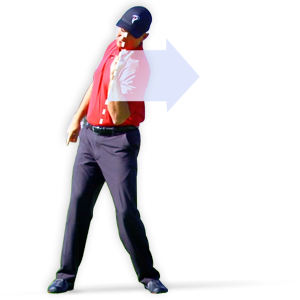
Physical Parameters Causing Reverse Spine Angle and How to Diagnose Them:
In order to maintain your spine angle during the backswing several physical characteristics must be developed. First and foremost, the ability to separate your upper body from your lower body allows your shoulders to rotate around your spine without going into backward bend or excessive left lateral bend. Limited trunk to pelvis separation is usually caused by reduced spinal mobility and shortened lat flexibility. Secondly, right hip internal rotation for a right-handed golfer is paramount for full rotation into the right hip without any lateral movement. If the body is unable to rotate around your hip due to joint or muscular restrictions than a lateral sway he may occur. Any lateral sway during the backswing will force the spine to tilt into backward bend and create the reverse spine angle. Finally, the ability to stabilize your spine angle during the backswing is directly proportional to the strength and stability of your core musculature (your abs and glutes). When it comes to spinal stabilization the core is the king. These muscles help keep your trunk forward flexed throughout your golf swing.
Reverse Spine Angle can also be caused by too much pelvic tilt at address which can cause you to have an S curvature in your lower spine. If this does not return to neutral as you swing back it can cause the Reverse Spine Angle fault. (See S-Posture)
